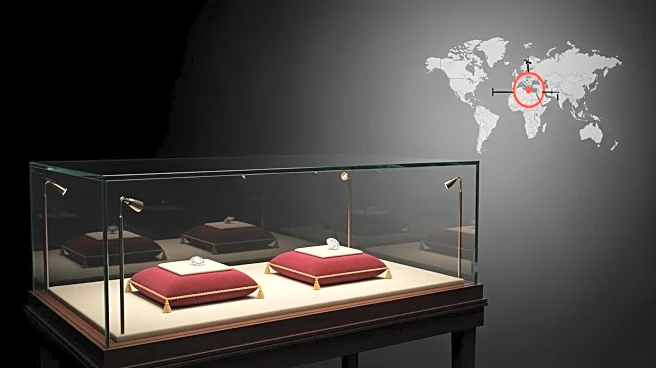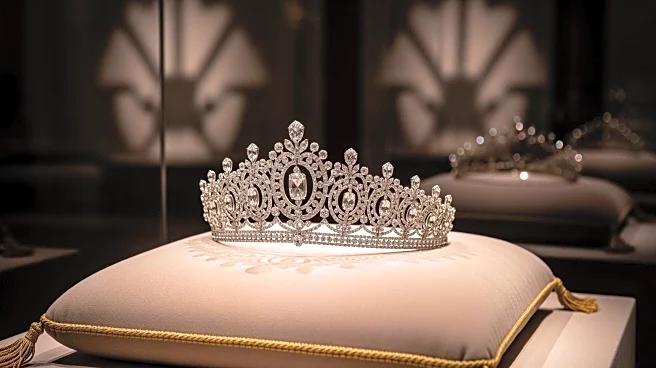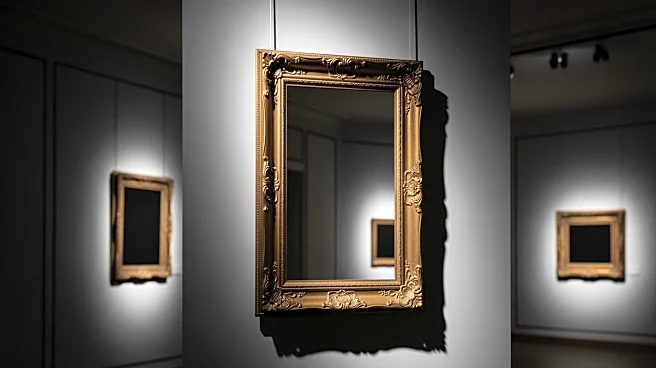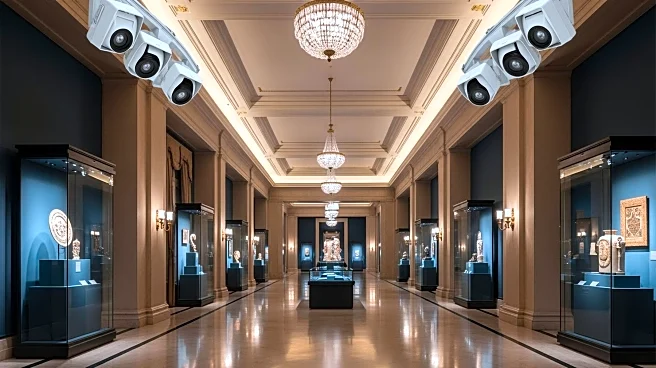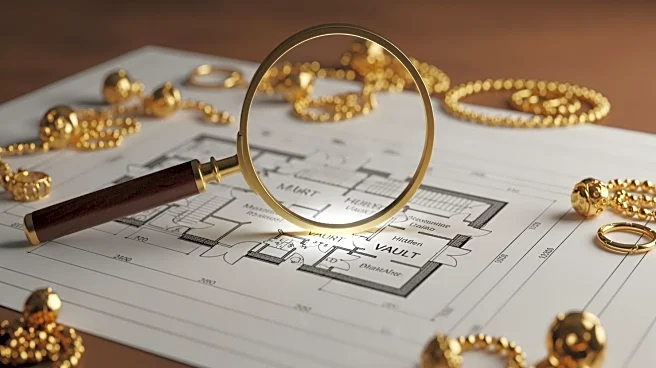What's Happening?
In a daring heist at the Louvre Museum in Paris, four masked thieves managed to steal eight pieces of jewelry valued at $102 million in just seven minutes. The theft occurred on October 19, 2025, and has sparked a national outcry and a widespread manhunt.
The thieves used a truck with an extendable ladder to access a second-floor balcony, then cut through a window in the Apollo Gallery using an angle grinder. They smashed display cases and took jewelry belonging to Emperor Napoleon and his wife. The museum's alarm was triggered, but the thieves escaped on motorbikes, dropping one piece of jewelry, the crown of Empress Eugénie, which was later recovered but damaged. French police have since arrested two suspects, while the search for the remaining perpetrators continues.
Why It's Important?
The heist at the Louvre, one of the world's most secure museums, raises significant concerns about security protocols at cultural institutions. The theft not only represents a substantial financial loss but also a cultural one, as the stolen items are of historical significance. The incident has prompted a reevaluation of security measures in museums globally, highlighting vulnerabilities that could be exploited by organized crime. The successful execution of such a high-profile theft could embolden other criminal groups, potentially leading to increased attempts at similar crimes. The recovery of the stolen items is crucial, not just for their monetary value, but for preserving cultural heritage.
What's Next?
As the investigation continues, French authorities are likely to intensify their efforts to capture the remaining suspects. The arrests made so far may provide leads that could help in recovering the stolen jewelry. Museums worldwide may also review and upgrade their security systems to prevent similar incidents. The Louvre, in particular, might implement stricter access controls and surveillance measures. The outcome of this investigation could influence future policies on museum security and the handling of valuable artifacts.
